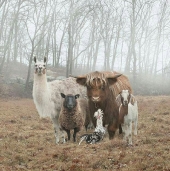







Mitchell Brouhard wrote:Hello everyone. I am looking to plant a garden for deer. I want to know what plants can handle deer browsing. Even if a plant needs some protection until it's established or tall enough to out compete the deer. All types of plants from annuals to perennials to trees and shrubs. I'd like to do at leat 50 percent natives. I live in the rouge valley of southern oregon.
Glenn Littman wrote:Christopher, my shop is 2,000 sq ft with 15' high ceiling with modest insulation. You're planning 6,000 sq ft. but you haven't given a ceiling height to determine the cu ft. Have you looked at Peter's website and the Building page with detailed specs for sizes up to a 10" system?. That same page provides some calculations for a given volume and temperature differential performance to provide guidance and help you to determine if a single system will be sufficient or if perhaps 2 will be needed. https://batchrocket.eu/en/building
If you happen to know a plumber that installs hydronic heating systems they should also be able to run a BTU requirement calculation for you. I would think that one 10" system my be sufficient based on the numbers published by Peter. You can see that a 10" system has more than 4 times the thermal energy output versus a 6" system like I am running. With that said, it would be good to have someone with the knowledge to run the BTU calcTulations confirm this for you.
Benjamin Dinkel wrote:Hi Christopher,
maybe check out this triple barrel batch box:
https://permies.com/t/193821/inch-batch-box-rocket-mass
Glenn Littman wrote:Christopher, where are you located? How cold does it get in the winter? How well is the building insulated?
Hopefully, the science guys on the forum can chime in with their BTU calculations and thermal science but they'll need to know the ceiling height and insulation details.